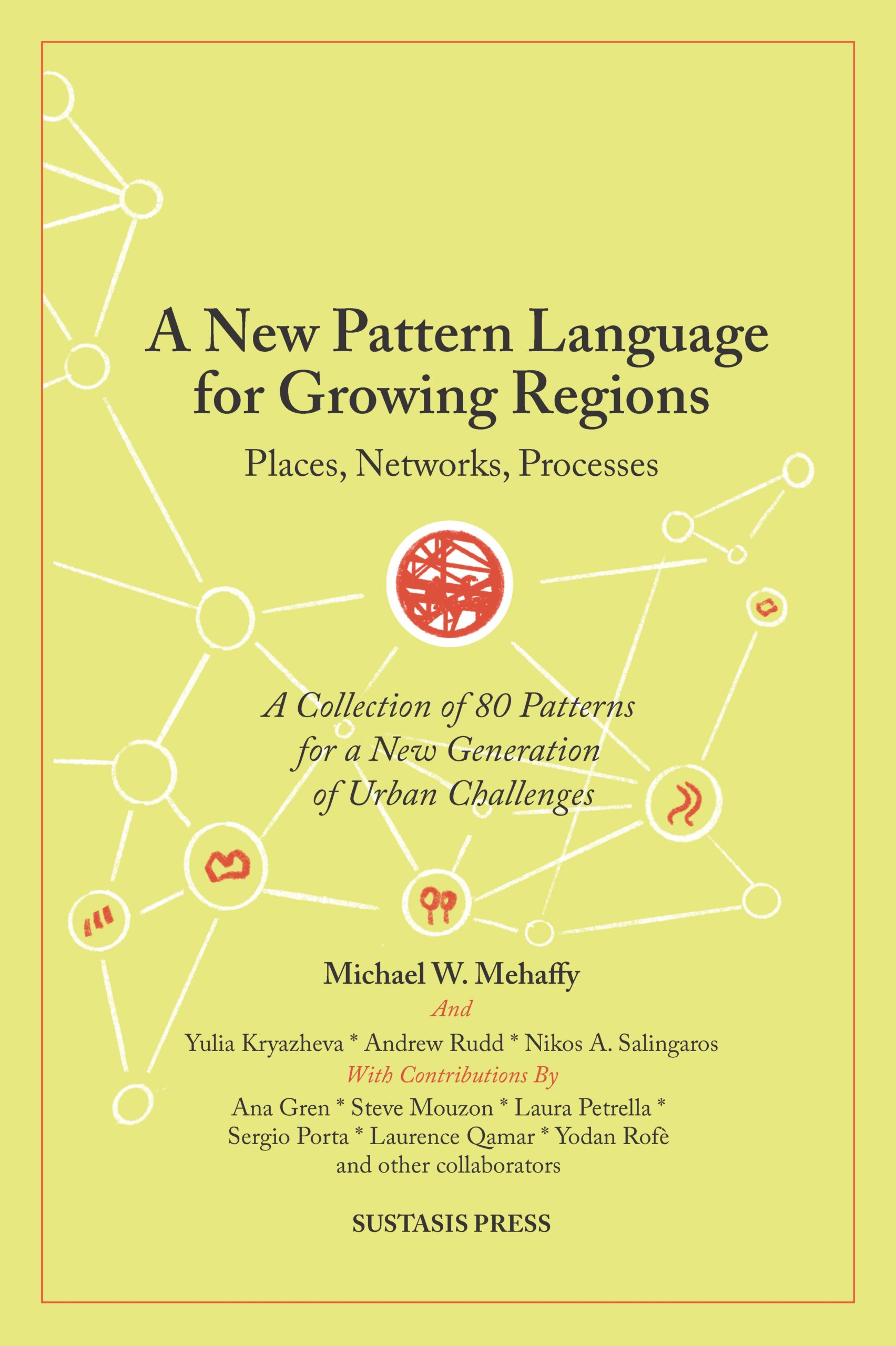By Michael W. Mehaffy with Yulia Kryazheva, Andrew Rudd, and Nikos A. Salingaros
Sustasis Press
The 1977 book A Pattern Language was a landmark in the design world, introducing a methodology that has become influential across many fields. Among them are software and “design patterns,” and important spinoff technologies like wiki (the basis of Wikipedia) and Agile Methodology. Yet curiously, the field where pattern methodology began – the built environment – has lagged conspicuously. As one remedy, a number of long-time collaborators with the original book’s lead author have followed the explicit guidance of the book, and developed a new collection of 80 patterns offering tools and strategies for a new era of urban challenges. This new collection emerged in part from a five-year collaboration with UN-Habitat to address new urban challenges, including rapid urbanization, slum upgrading, sustainable urbanism, and new technologies. Together with the launch of an online companion pattern “repository” (available at npl.wiki) this volume aims to expand the capacity of pattern languages in support of a hopeful new era of open-source, human-centered, life-enriching technology.
“This is really exciting work… it is just what is needed.” –Setha Low, Professor of Anthropology and Environmental Psychology, City University of New York
“Have just been looking at your pattern language book – amazing! Hard to describe the feeling, after 40+ years, of seeing a new fresh version with contemporary concerns, not just patterns but multi scale, and self-build and processes etc. What a new lease of life it will also give to the original.” –Stephen Marshall, Professor in Urban Morphology and Urban Design, University College London
“The technology of A Pattern Language launched Wikipedia and the other programming methods we advanced. We are pleased to be a part of the cyber life of this work, returning again to have an impact on the built world.” –Ward Cunningham, inventor of wiki, and co-developer of software design patterns and Agile Methodology
About the authors:
The authors are former collaborators with Christopher Alexander, the main author of the original A Pattern Language, or colleagues who have worked together to develop new patterns and associated documentation. Michael Mehaffy, lead author and editor, was manager and research associate at the Center for Environmental Structure – Europe, Christopher Alexander’s office in Binsted, UK. Mehaffy is also a long-time published scholar on Alexander’s work as well as collaborator with Ward Cunningham, inventor of wiki and father of pattern languages of programming (AKA “design patterns”). Mehaffy has held appointments in teaching and/or research at seven universities in six countries, and is on the editorial boards of two international journals of urban design. He earned his PhD in architecture at Delft University of Technology.










